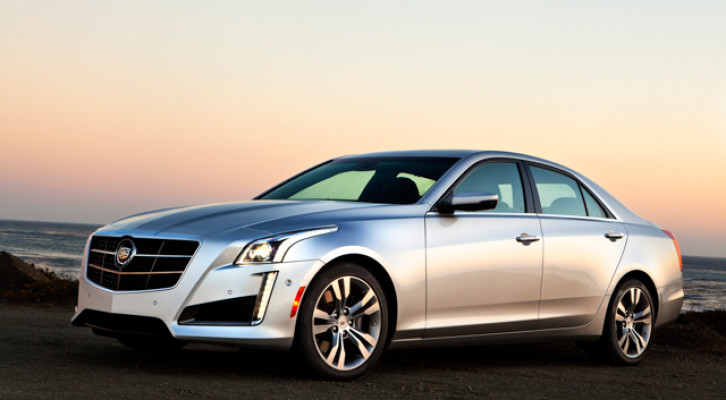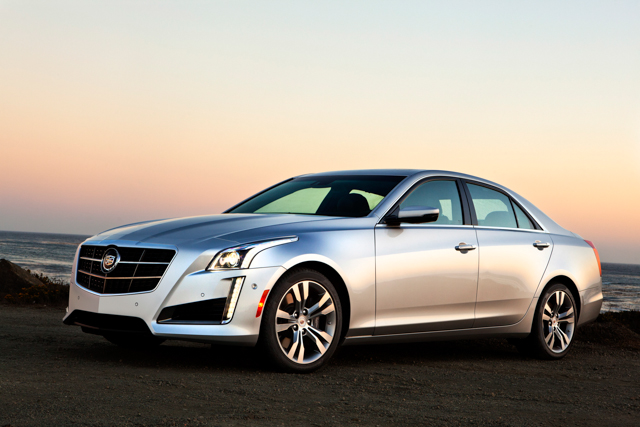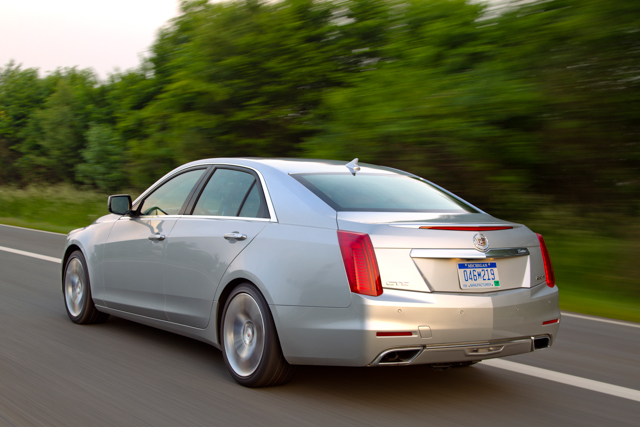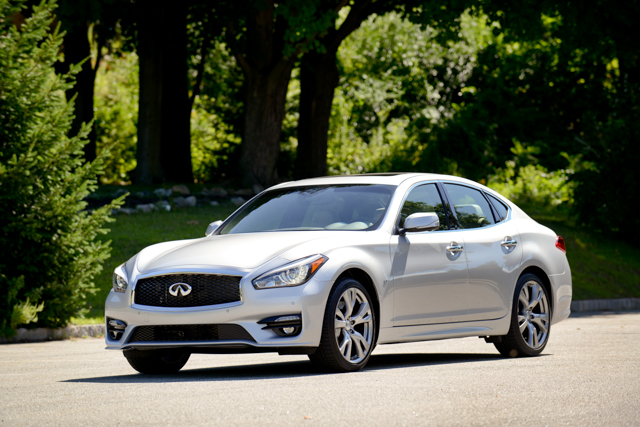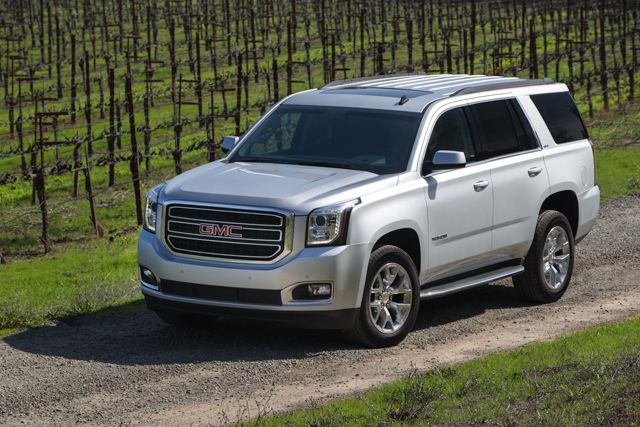Chances are you’ve already heard this a few times, but Cadillacs have gotten nice. This isn’t really news, as the brand’s been working on a renaissance for the past decade or so. Still, I always find myself impressed by just how much personality and style they’ve evolved.
It’s the fault of Cadillac’s long slump during the Eighties and Nineties, to be fair. Badge-engineering and lackadaisical styling did a number on Cadillac’s prestige, so even though it’s been a while since Caddy started taking itself seriously again, actually seeing and feeling the difference is still a pleasant surprise.
Case in point, the new Cadillac CTS. The CTS has been with us since 2002, but the all-new 2014 version’s taken a jump upmarket, taking the place of the now-departed STS. Stepping up into the shoes of its former big brother, the CTS blends the latest evolution of the brand’s knife-edge styling with a bit of classic length for a new and more distinctive look. Although it started life as a near-luxury me-too vehicle, the CTS has grown into a stylish generator of automotive confidence. “We look good, and we can do this,” the CTS seems to say, making it a good companion for tending to a busy life.
How can you thwart that face? The Cadillac eggcrate grille has been one of the most assertive in the business for a long time, and the CTS’ new, aerodynamic version gives the car a look that is, for lack of better phrasing, refined and modern. The swept-back LED-accented headlamps are cool, imparting a sense of motion, and the CTS has a nicely sculpted hood and creased body sides that are reminiscent of the CTS’ predecessors without imitating any of them. At the rear, the vertical taillights feature Cadillac’s signature tall-and-thin layout, but are bold enough to present a muscular look as well. From the rear three-quarter view the CTS looks a bit chunky, but in the metal it’s surprisingly svelte considering its size. The CTS looks much better in daylight than it does on the showroom floor, actually–there’s a great deal of clever light play to show off the lengths that the stylists went to so it would stand out.
In my CTS, deep red leather accented the gray interior. The red contrast stitching, multiple colors and textured trim look best in daylight, which makes the available panoramic sunroof a perfect complement. Cadillac’s been doing fantastic interiors for a while now, so the charming cabin of the CTS was a reasonably familiar space. The red is just one way to do it; Cadillac offers eight different interior environments. Cadillac’s CUE infotainment system is a piano-black and chrome expanse of touchable surfaces that is at turns convenient and irritating. Yes, it’s got an easy to read twelve-inch screen and offers a variety of helpful functions, but CUE’s tablet-style navigation takes some getting used to. The CTS’ longer body provides a more comfortable rear seat as well as a trunk big enough to swallow two or three big suitcases. As a result, airport pickups–one of Cadillac’s natural habitats if legions of executive cars are to be believed–are a breeze.
Fighting the traffic at the terminal is a snap. The CTS drives with an easy confidence and a very solid feeling; it’s grown up, stepping nicely into the role formerly occupied by the STS but with a lighter, more athletic feel. Learning that it’s related to the nimble ATS by platform wasn’t a surprise at all. The CTS has gone on a diet, with new aluminum body panels, the better to go toe to toe with the BMW 5-Series. Can it do that? For certain values of BMW 5-Series, yes. The CTS’ suspension uses double-pivot arms up front and a five-link rear. It’s responsive and imparts a confidence-inspiring level of road feel. Cadillac’s Magnetic Ride Control active suspension is also available.
Like the competition from Germany, the CTS views the world through a combination of ultrasonic sensors and radar units, enabling collision-mitigating emergency braking protection for the front and rear, as well as the seat-vibrating blind spot and lane keeping assists. Cadillac’s buzzing seat is a subtle hint to the driver; whether it’s preferable to a chime is up to the individual.
Since when does a sport-luxury sedan this size make do with a four-cylinder engine? Since the CTS’ smooth 2.0 liter turbo, that’s when. This compact engine returns 272 horsepower and needs to apologize for nothing. The CTS cruises effortlessly on the freeway, and has no trouble pulling quickly off the line, and I can’t help but like a big sporty sedan that offers up 30mpg on the freeway. The six-speed automatic transmission is seamless. Selectable driving modes are offered, in current luxury-sedan fashion. In Normal mode, throttle response is a little sluggish, favoring smoothness over acceleration. Kick it over to Sport and the CTS behaves in a fashion that will likely poach a few buyers from Audi and the other Germans.
By the way, the CTS isn’t a four-cylinder only car. The new CTS VSport features a 420-horsepower twin-turbo V6 and an eight-speed automatic transmission.
The CTS starts at about $40,000, though once you’ve added the “Premium Collection” options package and other items it’s not hard to clear $60,000, even without the larger engine or all-wheel drive. The CTS I drove hit $65,425 thanks to nineteen-inch wheels and the fancy black and red interior. Somehow, the MSRP wasn’t daunting, though. It’s enough to inspire a sense of cheerful optimism, in fact. Cadillac had been pretty much counted out of the running less than a generation ago, and now the CTS is in the running for top of the heap. The new CTS is good, it’s worth sixty grand and it appears to be just the beginning. The already-excellent CTS wagon and coupe have not yet graduated to the updated sedan platform, which means the new CTS family is poised to grow. Who knows–maybe we’ll even see a convertible coupe?

